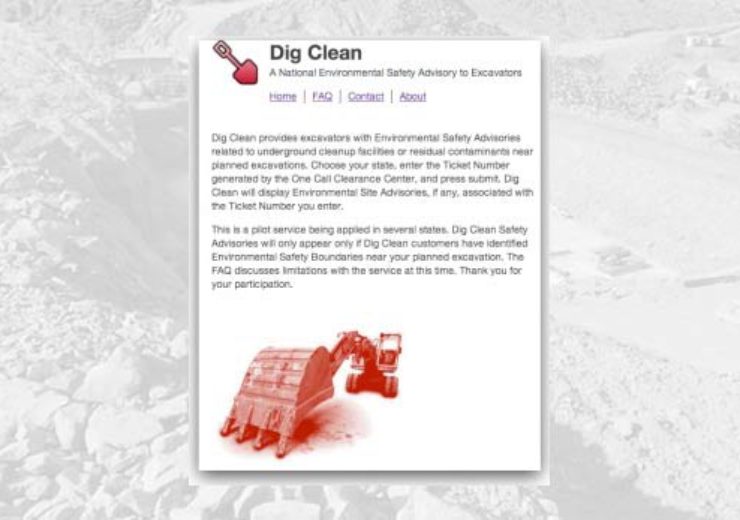Slowly but surely, often with close involvement of Terradex, the power of one-call helps manage cleanup sites. In every state, call-before-you-dig or “one call” laws require a phone call (or increasingly an electronic notice) of the planned dig. State one-call centers route the resulting “excavation tickets” to the people and companies who own or operate underground lines who, in turn, send back “all clear” messages or mark the lines so excavators don’t hit or damage them. For over ten years, many who study environmental cleanup and, in particular, post-cleanup institutional control (IC) compliance see the one-call regime as a valuable tool for cleanup site management.
Leveraging one-call for environmental cleanups makes sense. Like one-call’s conventional focus on underground utility lines, cleanup site engineered processes and residual contamination poses an underground potential hazard to excavators and the environment. Indeed, a series of EPA One Call Pilots concluded that “the one-call system can be utilized as an effective means for IC notification.” And in its report on Land Use Control Management Systems, the Interstate Technology Regulatory Council concluded that:
“states need to implement LUC management systems” and “One-Call system[s] provide a ready made network that could be adapted to include LUCs … notification systems, such as Terradex” in combination with One-Call systems “would provide a high level of protection.”
More recently, EPA’s Five Year Review Supplement on Recommended Evaluation of Institutional Controls recognized the potential role of One Call. “State one-call systems [] can protect the public and environment from uncontrolled excavation and help identify breaches to the ICs.” Finally, ASTM’s Continuing Obligation Guide similarly identified one-call systems as possible practices for monitoring compliance with institutional controls.
Increasing Use of One Call at Environmental Sites
Agencies in California, Utah, West Virginia, and a large Superfund Site in Idaho, currently coordinate with one-call systems to help monitor and protect cleanup remedies. And Delaware is gearing up to begin a one-call effort, while New York is moving towards a one-call pilot. See States and Locals Gather on the Web to Talk ICs. Other states are closely looking at it. In addition to state agencies, Terradex also helps some responsible private companies across many states, by leveraging one-call to monitor for inappropriate land activities at sites they own, operate, and even those sold away to new owners. Among many other examples, Terradex prevented contaminated soil from being hauled away as clean fill and prevented excavation and well construction through contaminated groundwater.
Terradex’s Dig Clean Service for Environmental Advisories Through One Call
With the recent launch of Dig Clean, Terradex continues to help and improve the way one-call systems can be leveraged for use at cleanup sites. And with the Dig Clean model, the per-event pricing proves extremely affordable, even under tight budgets. The process goes like this. A state environmental agency, for example, downloads or otherwise lets Terradex know about the IC areas or other environmental contamination areas of concern. We load those into our Dig Clean system. And we deploy Dig Clean as a “receiving station” for one-call generated excavation tickets. We filter the tickets against the contaminated areas or IC areas. When we find an excavation in conflict with an IC, we send a Dig Clean advisory as an e-mail, fax, text message, or automated voice message, depending, and make it accessible at the Dig Clean web page. See the overview presentation video.
With Dig Clean, environmental agencies, excavators, or anyone with a Dig Clean-provided Ticket Number can view combined details about the excavation and underlying environmental conditions. This advisory, in turn, informs and alerts stakeholders, facilitates additional communication if necessary, and truly “gets the right information to the right people at the right time.” Excavators can get the notice they need about any environmental or health risks and environmental agencies help assure that their cleanup remedies remain protective.
Terradex users get additional features, above that available publicly at Dig Clean. Terradex users can store, view, and generally manage excavation advisories related to their sites of interest. This gives keen insight while also providing a stored record about the nature and frequency of land activities at environmental cleanup sites – a valuable resource for long term stewardship managers.
Like all new things, however good, coordinating the underground utility-focused one-call regime for use at environmental cleanups takes time and pioneering efforts. While states and private companies continue to make good progress, a fully coordinated process doesn’t yet exist and the coordination that makes sense at one site or at one state may differ.
Recognizing this, the Terradex and Dig Clean process provide enormous flexibility that allows advisories to be sent whenever and however the situation demands. We hope this tool, with all its flexibility, continues to further our business of improving environmental protection and health and safety.

